May 16–Jun 30, 2022
-
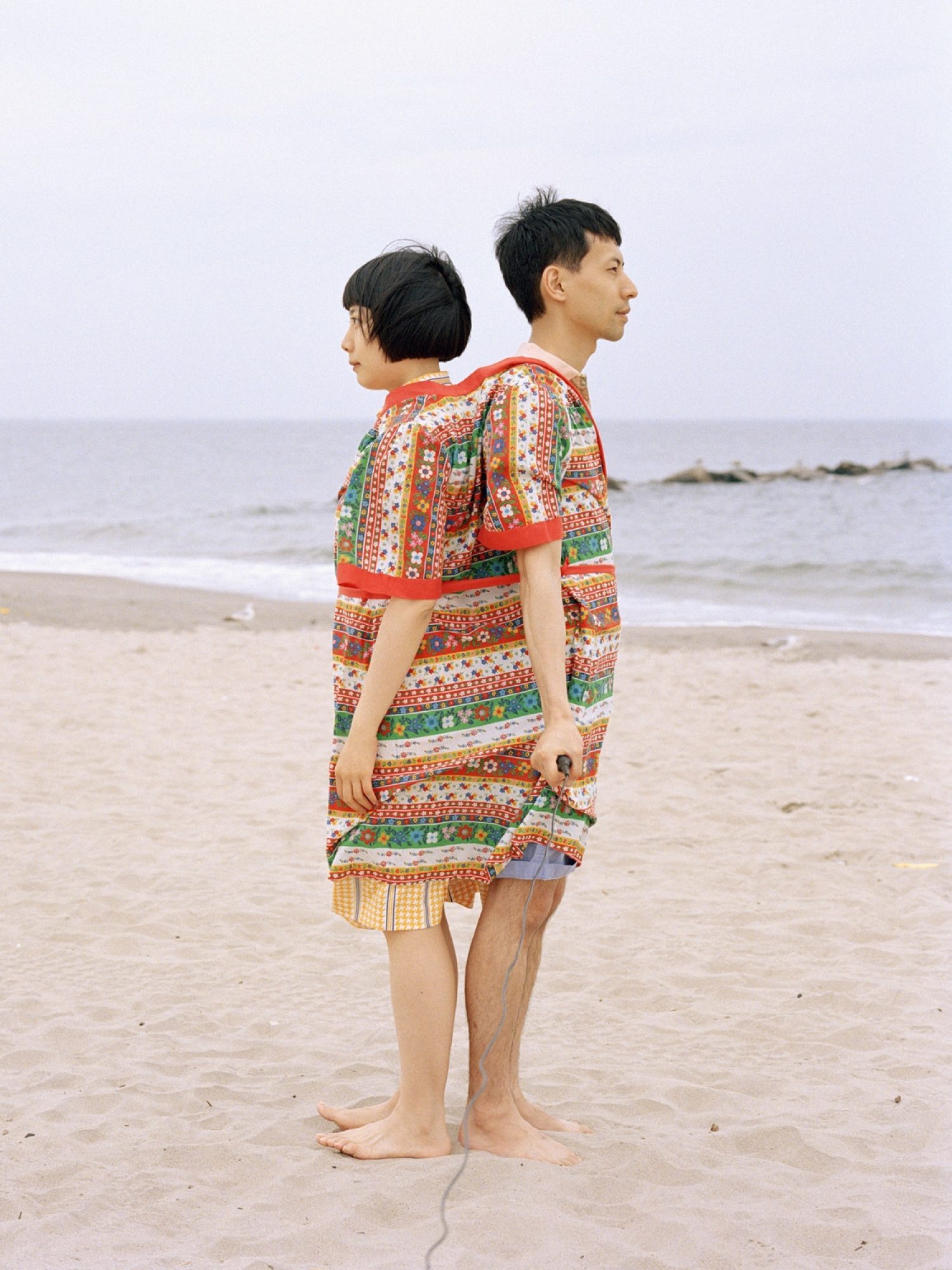
1/12: Beach Sister II, 2014
-
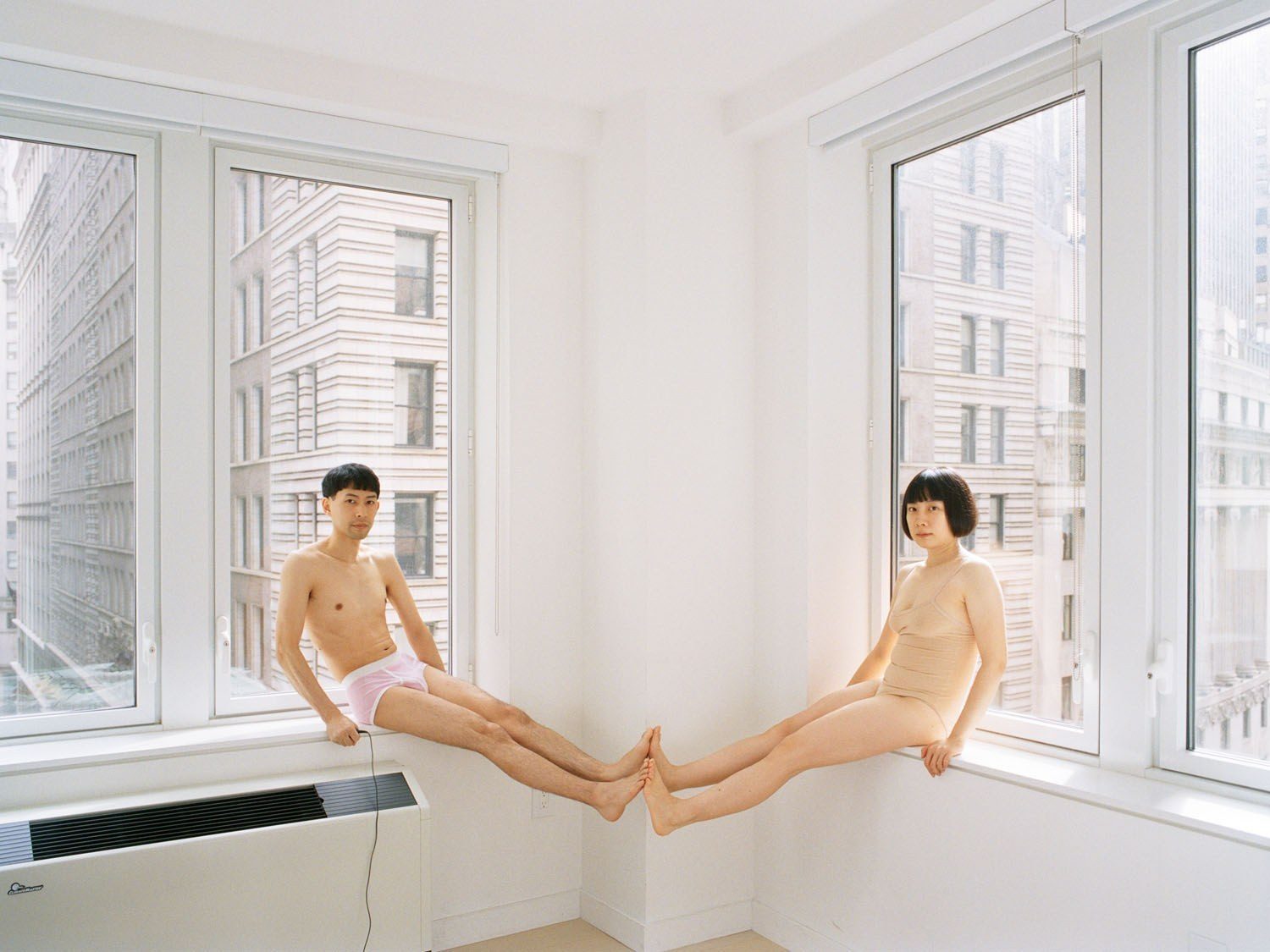
2/12: Clapping Feet, 2020
-
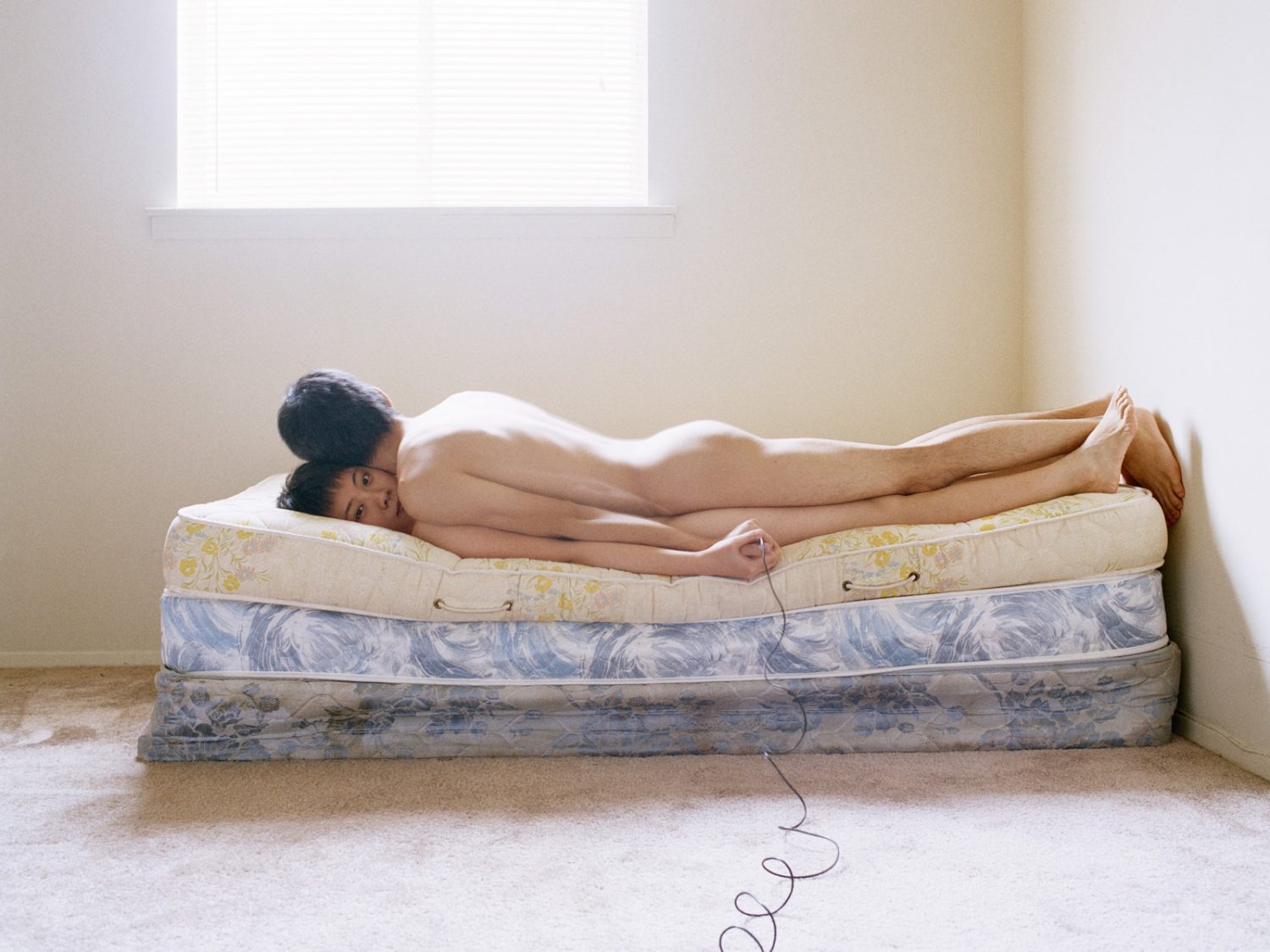
3/12: How to Build a Relationship with Layered Meanings, 2008
-
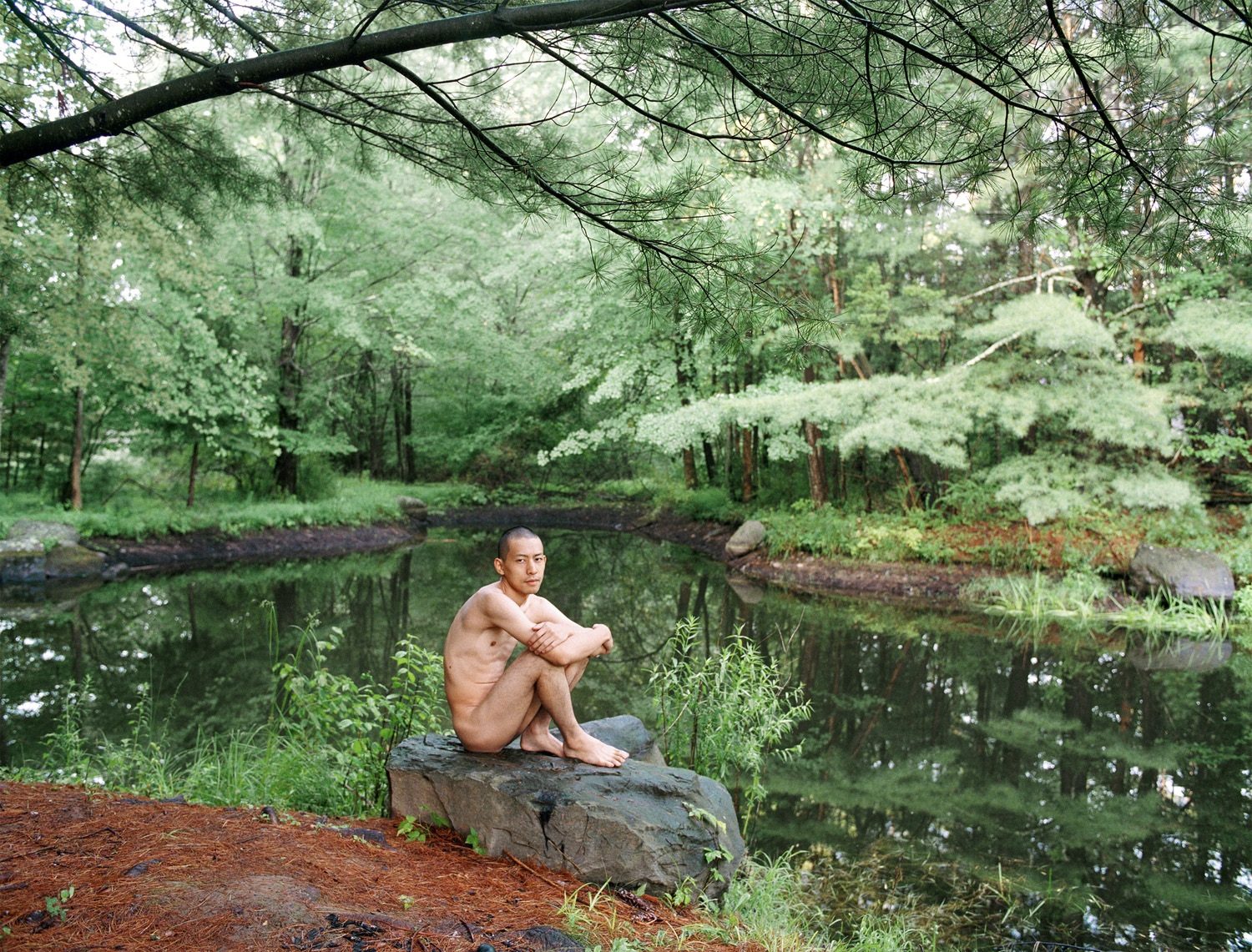
4/12: Moro by the Pond, 2010
-
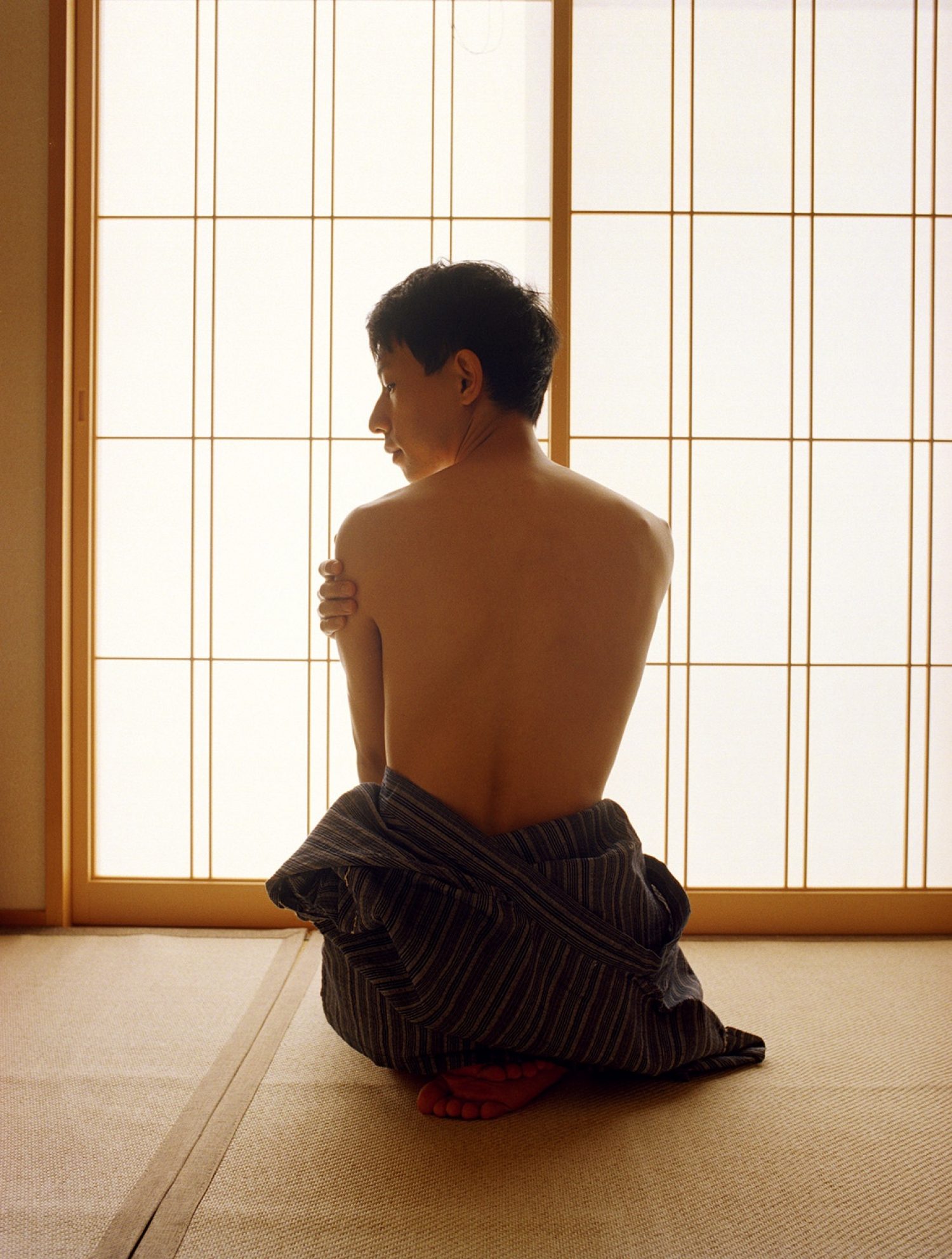
5/12: Beauty is in the eye of the beholder, 2015
-
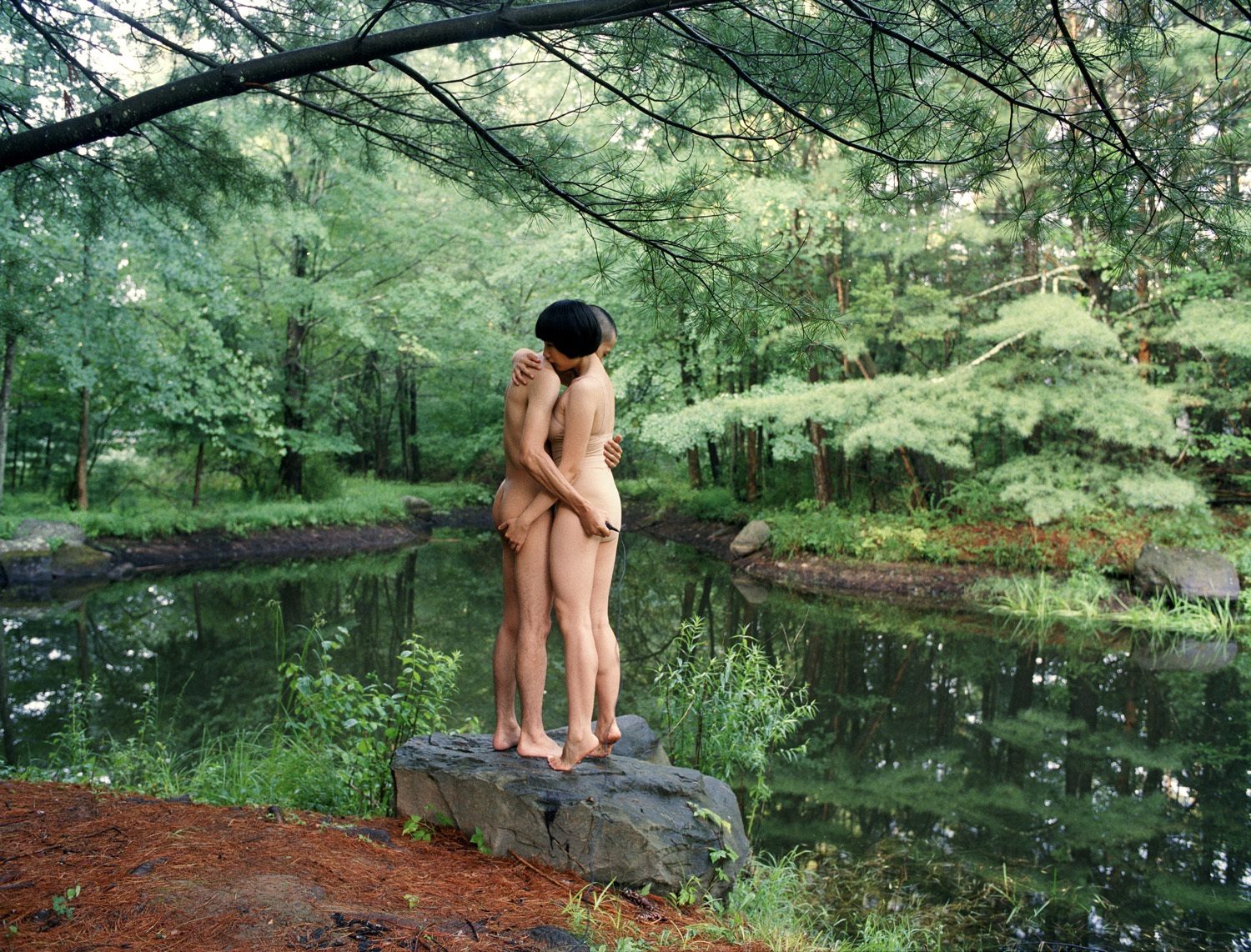
6/12: Hug by the Pond, 2010
-
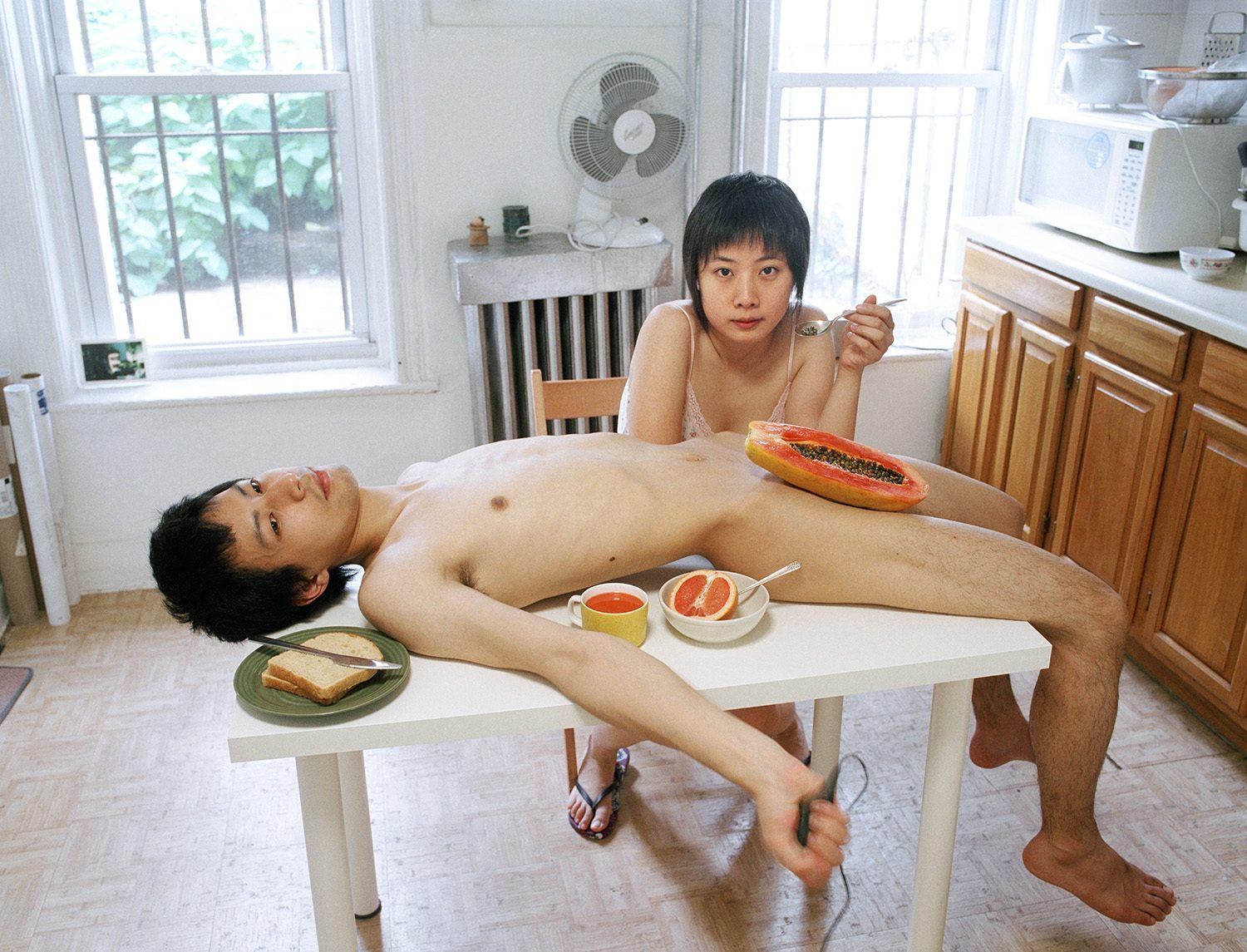
7/12: Start Off Your Day with a Good Breakfast Together, 2009
-
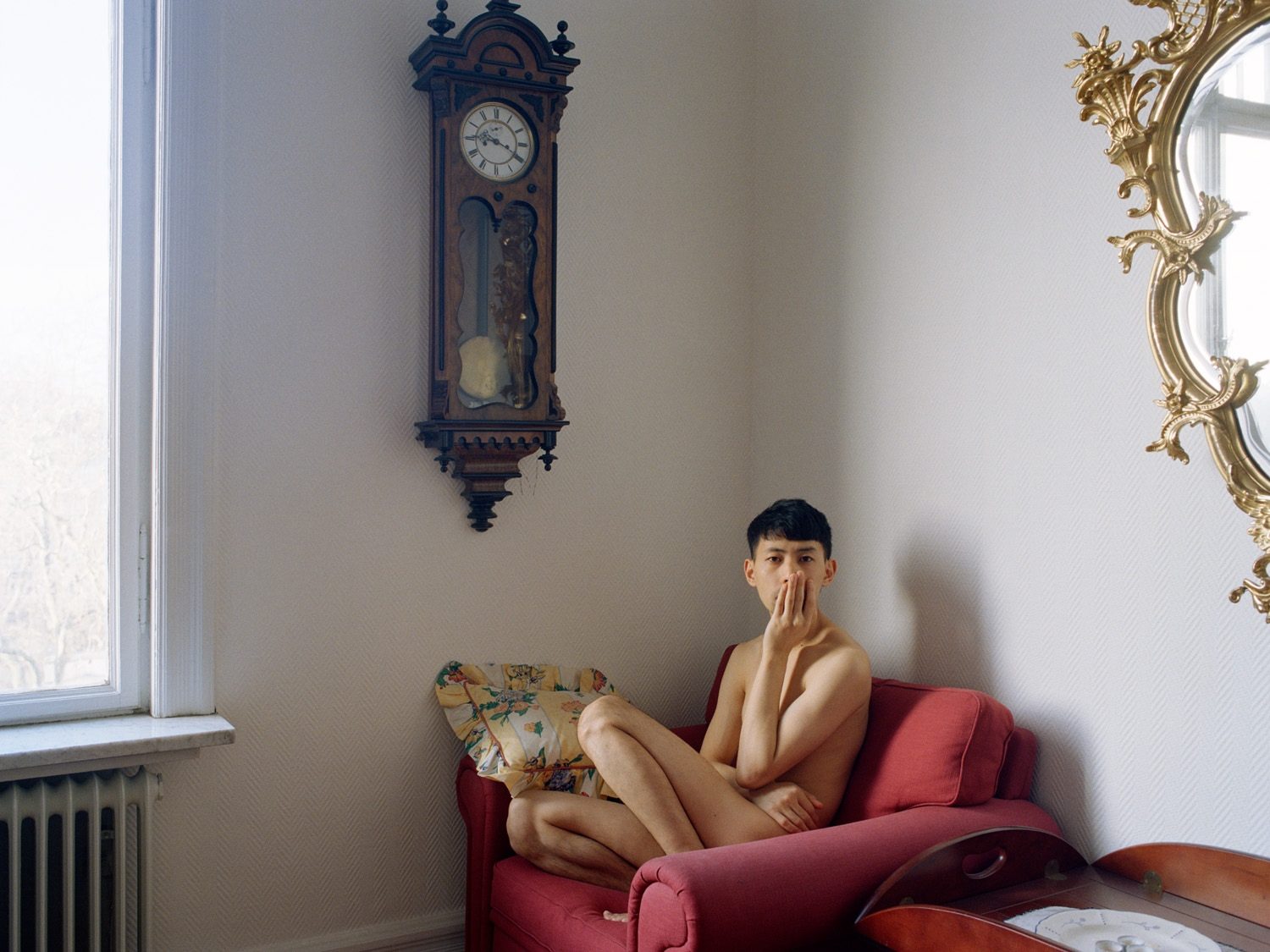
8/12: Moro on a Couch, 2017
-

9/12: Devour, 2015
-
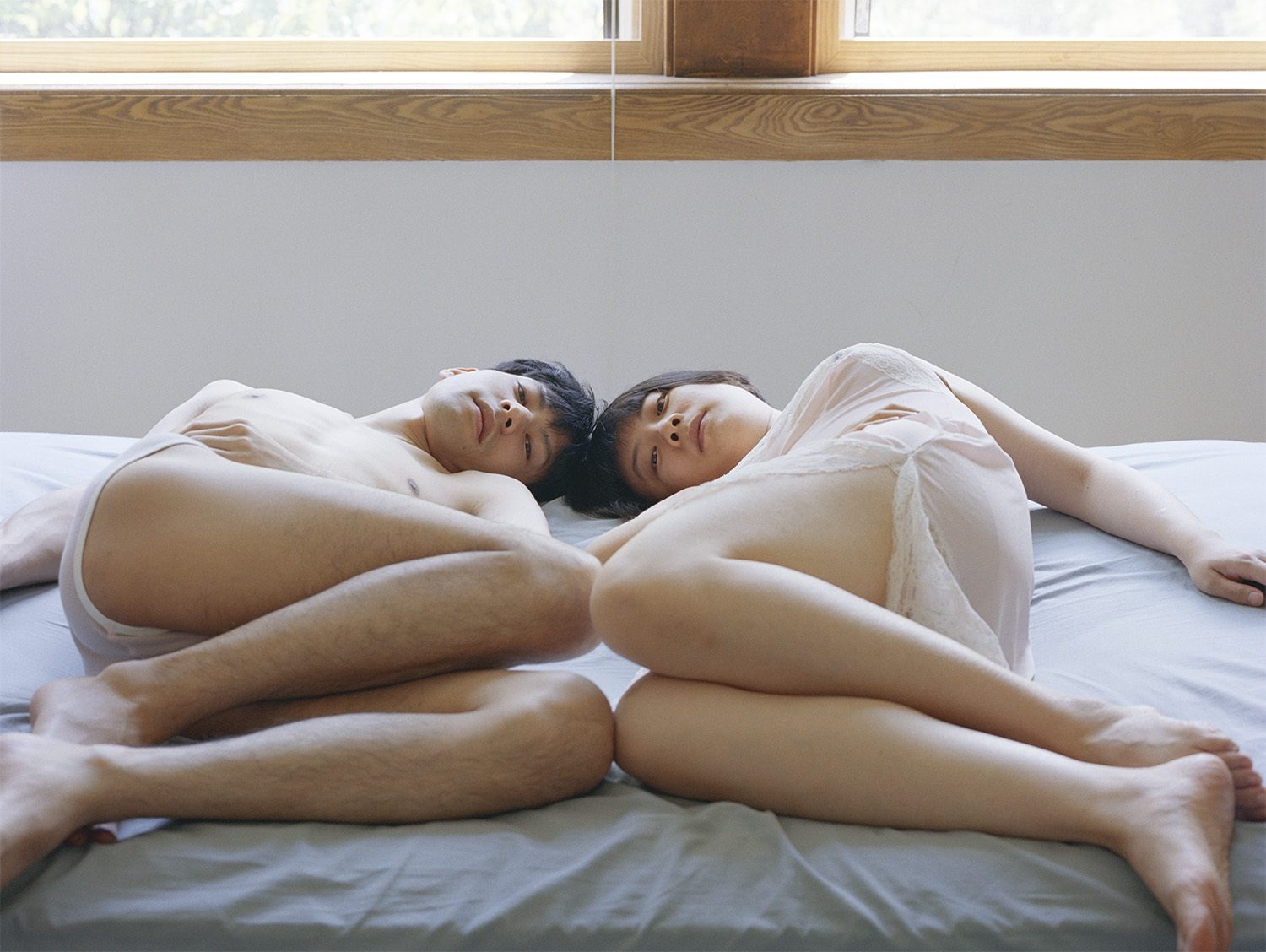
10/12: Twin Bed, 2015
-
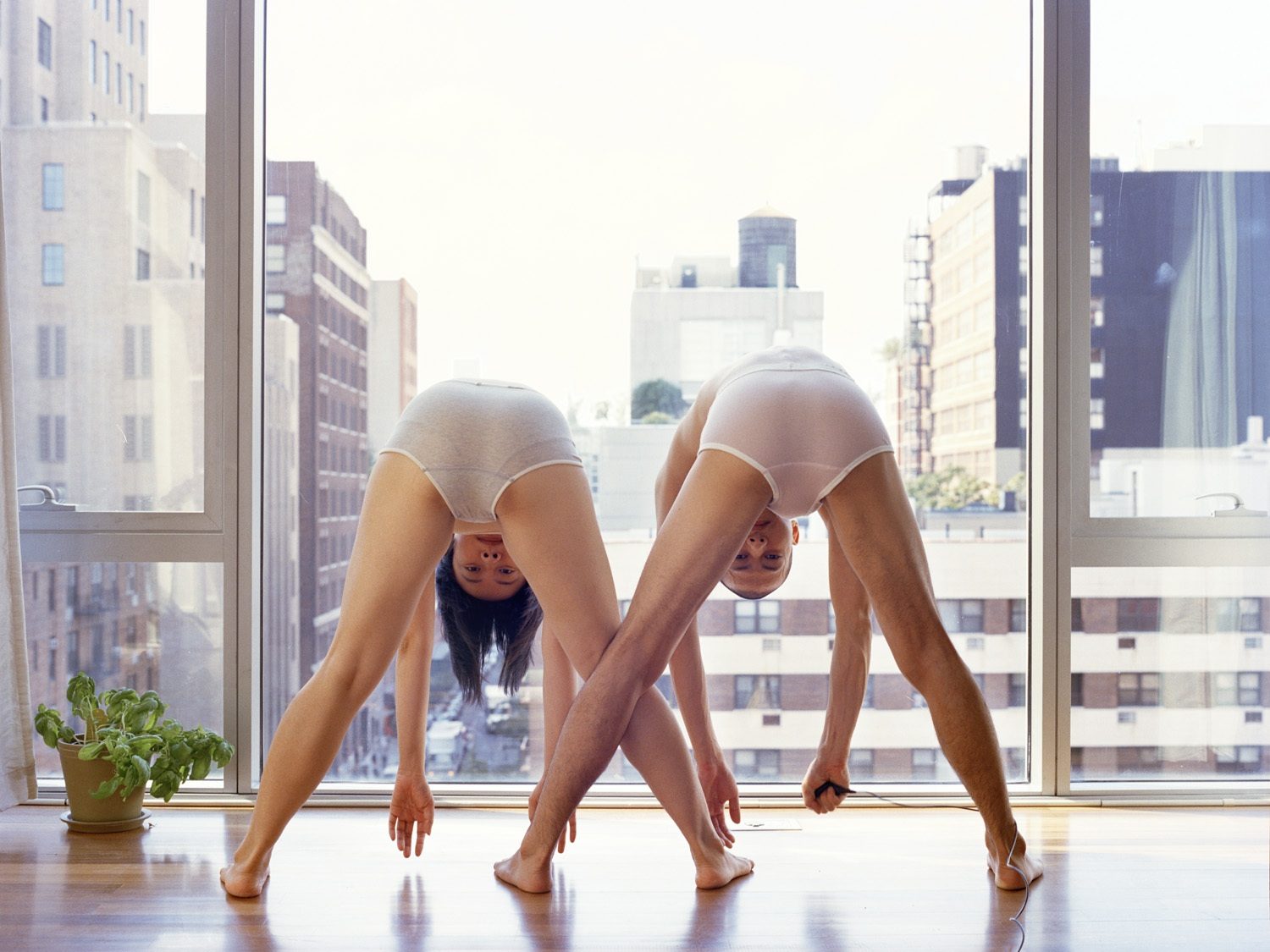
11/12: Welcome to the gates of a new era, 2014
-
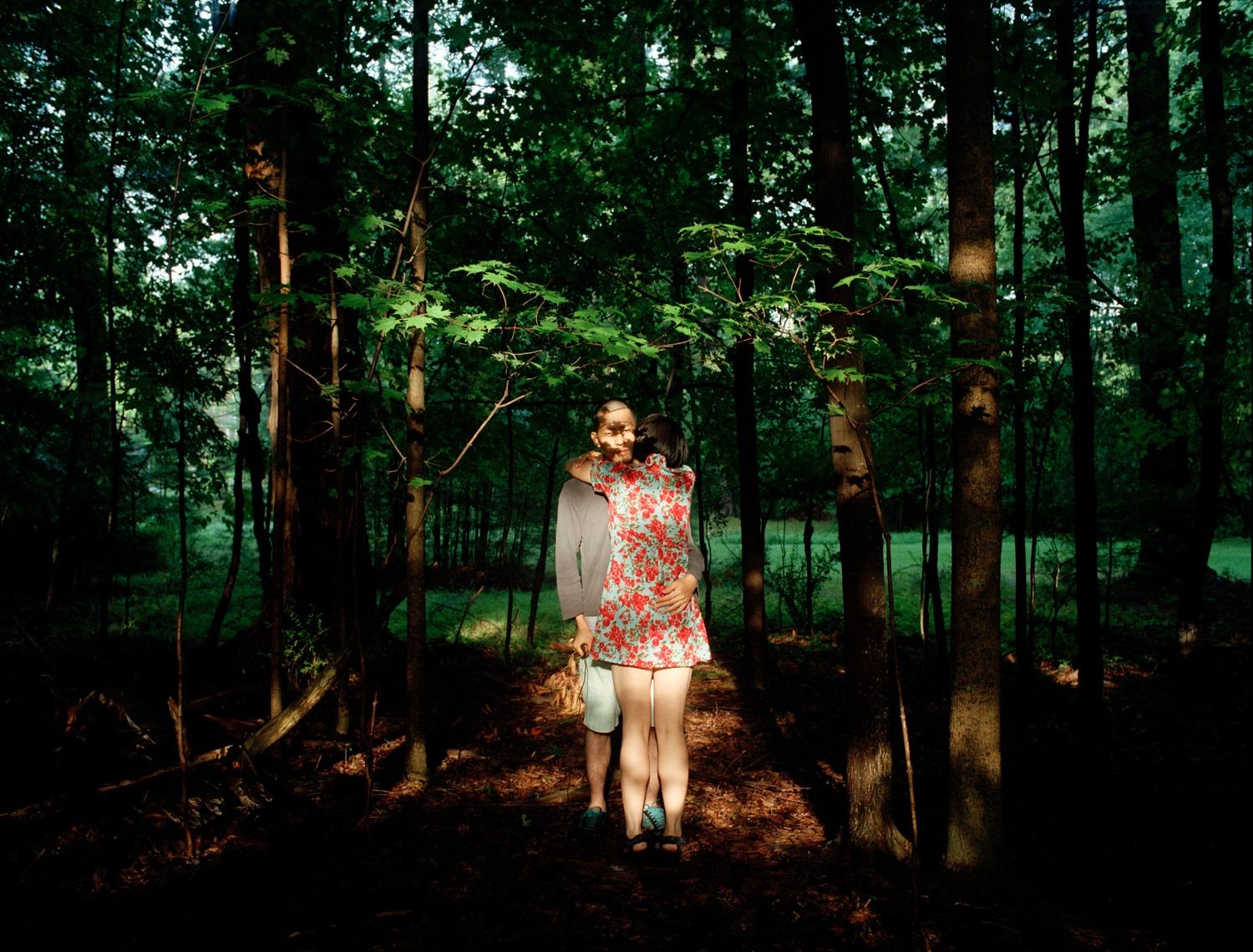
12/12: The Hug, 2010
Photographer Pixy Liao’s works are sensitive and personal, but they are also playful and performative. In Experimental Relationship, she invites the viewers to look and reflect on their own experience by showing the viewers different aspects of the relationship between her and her partner Moro. Through her choice of gesture, colors, and space, she created stages where different intimate moments between the two people are being exaggerated and examined.
Silver Eye Scholar and University of Pittsburgh Senior Clara Wang speaks with the artist about experimenting with photography through the development of this long-term project.
Clara Wang: If you could start with a short introduction to yourself, when and how you started making photos.
Pixy Liao: I used to be a graphic designer, and I always felt like I was limited in graphic design because I don’t really get to choose the final result because the client’s needs are prioritized. I saw and used a lot of photos as references and inspirations, and a lot of the time, I felt like the creativity came from the photos rather than the designs. That’s how I got interested in photography. I also watched a movie called Blowup, and the photographer in the movie is a fashion photographer, and his life is so fancy. I was dreaming that if I became a photographer, I could live a better life like his, and that’d be nice. Then I started shooting. I slowly figured out what type of photos I wanted to shoot. And I feel like I didn’t find my true passion in photos until I did the Experimental Relationship project. Before this project, I was shooting a lot of photos that could have been created by other people. When I realized this project was something that was unique to me, I started to focus on it. It became a part of my life that helped me figure out who I am.
CW: Like your approach and perspective to the project are changing while you grow and experience more.
PL: Yes, and I was trying to use this project to explore myself and represent my understanding of how I grew up and became who I am today and who I want to be in the future.
CW: You said that you started with graphic designs, and after you discovered your interests in photography, you gradually realized the subjects you are interested in photography. Could you tell me more about the transition between these stages?
PL: When I was doing graphic design, I used other people’s photos a lot. They were always very beautiful, colorful, and composed pictures, so I tried those subjects before finding my true passion. I don’t think I’m specifically interested in portraiture, although there are many in my works. If it’s not this project, I think I might just be an interior design photographer. That’s what I do for commercials; I prefer to shoot non-moving things because I work slowly.
CW: Slow as a working process?
PL: Yes. I can’t give an immediate response to things. When I see something, and I take off the camera to shoot, the things are gone already. For this project, it’s easier to arrange because it’s just Moro and me. I can plan the image before I shoot, and the process becomes slower, so I can think.
CW: That’s so interesting you mentioned you pre-plan for each photo because that’s something I noticed when I was looking at this project. I get a strong sense of your intention from not only the human – the main subject but also the entire space in the photo. I am curious about what level you plan for each photo.
PL: I plan quite a lot. I would think about the shooting location and what clothes to wear, among many others. And the most important thing that I consider for each image is the key idea. I have to have an idea that interests me enough for me to shoot. In the earlier images, I was more worried about getting everything perfect and planned, but then I realized that there is a limitation to that. The images were too restricted. As I kept shooting, Moro also improvised the work because he started to understand more about what I was trying to do, and he sometimes would give me suggestions.
CW: That’s so interesting that Moro also engaged in the process of shooting and decision-making. You guys share a very close relationship beyond a personal level, and I wanted to ask that do you see him as a collaborator of your work?
PL: I think it’s a constantly changing thing. I definitely see him as a collaborator sometimes. He sometimes is more important than me in my photos because it’s rare for someone to have a partner who is a natural muse and model. How much I take Moro’s opinions, and suggestions are changing. Sometimes I feel like, yes, I can take that, and it will make the work better. Other times I can’t because I don’t want to make a photo that is not what I want.
CW: You started this project about 16 years ago, right? Did you know you would keep working on it for so long? How did your perspective change?
PL: Yes, I started this project in 2007. To be honest, I didn’t think Moro and I would last very long, so that’s why it’s an experiment. But then, as we collaborated on this project, I just started to see how we could work together and how this might help with our relationship. In different stages of our life, our roles are also changing. At the beginning of this project, when I met Moro, he was a young student who had just graduated from undergraduate, but I was already a graduate student and had a job. But then we both graduated, and we started to try to make a living here and look for jobs; we came to the same stage. Moro came to the U.S. earlier than me, so his “U.S. age” is older than mine. It was then I realized that our relationship had changed, and we needed to rebalance the power dynamic. It took a while for us to figure out his most comfortable way to live together. All these changes are affecting the project.
CW: I definitely saw some of the changes in the project, and that makes sense of how the project parallels with your real-life experiences. We talked about change. Are there things that have stayed the same since you started the project?
PL: I think for this project, personal feelings are very important. How each of us feels about our relationship and what interests us in the shooting are the foundation for this project. I now want the project to last as long as it can be as long as Moro and I are still together.
CW: I hope it will last forever then. We talked about your experience and inspiration for this project; now I want to move on to talk about the concept of it. The images in this photo are very personal and intimate. You and Moro are the only two figures in the space, and the space feels remote from the external environment. When I am looking at them, I sometimes feel like I am invading the space. How do you see the relationship between your work and the viewers?
PL: We all know that it’s impossible to know what people would think about a work because everyone has their own experience with the work. To me, many viewers think this project is intimate. In a way, it is, but it’s definitely not a documentary. Some people might think that “oh this is a couple documenting their personal moment of their relationship.” However, to me, this is like a performance in front of the camera. Rather than representing a specific moment or place, the image represents an idea about the relationship. I don’t really feel vulnerable when I show this project to others because I see myself as a character, an actress in the work.
CW: That’s so interesting to hear about your thoughts on the work. Do you think the character you “played” in each image is the same person or different?
PL: Definitely different. I think in a relationship, the roles between the people shift. Especially when you are together for a long time, people will switch roles so many times. In my photos, we switch roles too. For example, in some images, we would pretend to be different characters, such as high school girls, mafia, and other roles.
CW: That sounds like a fun process. I guess my next question, in a way, is related to the idea of the character. What do you think about the term “body,” and how do you use it in your work?
PL: I tend to work in a way that I don’t rely on anyone else but Moro, so the body becomes the only thing we can use. Also, I think people respond to the body directly, and it’s very different from how we react to objects because a body connects to a personal experience and feeling. Another thing about the body in this project is that you can see our bodies aging in photos shot in different years. Like when we were young, we were more fitting, and then our bodies became less ideal. That’s also something I learned from taking photos. Oftentimes when we take a photo, we think that we don’t look good, but then if you relook at the photo in a year, you will be like, “what was I thinking? I looked so much better.”
CW: That’s so true; I hated myself in almost every single picture. Maybe I should start taking more selfies. So now that we talked about your conceptual development, I want to talk a little bit about the formal qualities of your works. I was really drawn to the light color palette you used in your work. I wondered how you plan out your choice of color and light, and do you think your choice is affected by any factors?
PL: I plan my color palette very consciously, partially because when I was a graphic designer, color matching was very important to me. And like you said, I tend to use light and not super-saturated color because I think it parallels the idea of a relationship. I think a relationship should be light and happy, without pressure. I think a lot about the relationships between different colors in my photos, and I think each photo represents a different emotion. For instance, my personal favorite color, and I use it a lot in my works. It’s an aggressive but also passionate color, and it fits my identity as a woman.
CW: We talked a lot and covered a lot of questions. I guess before we wrap it up, is there anything that you want to talk about that I didn’t really ask?
PL: We talked a lot about the body, identity, and relationship, and I think there is another aspect of my work that I was interested in, which is my love for the male body. And I am thinking about it as a non-genderized term. I am really attracted to the tenderness and softness of Moro’s body. I am interested in gay portraiture actually, because I think the appreciation of the male body communicates with my idea. I am not a big fan of mainstream and the standardized aesthetic. That’s something I guess I want to add.
CW: Yes! I remembered you mentioned that in your artist’s talk, too. That’s also something that goes along with your subject, I think, right? Because it’s also another perspective for you to approach the “experimental relationship” through both your works and in real life.
PL: Yes, and it’s also changing and growing as the project moves forward.
CW: I think this would be a good place where we end the interview. I truly appreciate that you take the time to sit down and talk to me about your project and your practice as a photographer. I learned a lot about you and your works from our conversation today, and I am really looking forward to seeing how this project will grow in the future.
PL: Thank you so much. It was a pleasure talking to you, too.
Participating Artist
Pixy Liao is a multidisciplinary artist who works across mediums such as photography, music, and installation. Pixy was born in Shang Hai, China, and she lives in Brooklyn, NY. Her photographs often draw attention to the human body, relationships, and interior design. This virtual exhibition showcases her long-term project Experimental Relationship and the nuances that existed in this work. This project started in 2007 when Pixy was trying to experiment with the relationship between her and her boyfriend Moro – a five-year-younger Japanese musician she met at school. The images in this project took different visual forms and languages to create multi perspectives for viewers to understand and question the work.